Public Policy
A signature benefit of NAIOP is the powerful advocacy network that provides a leading, collective voice at the local, state, and federal levels. Be sure to visit NAIOP Corporate's site for information about their work on the federal level. And learn more about our political advocacy through the Commercial Real Estate of Wisconsin Political Action Committee (CORE PAC).
Public Policy Priorities
NAIOP Wisconsin works with leaders in each house and party, as well as the governor to ensure significant regulatory and tax reforms are maintained to ensure continued industry growth which drives over $4 Billion of contributions to the state’s economy each year.
Top Priorities:
- Provide the necessary relief to the commercial real estate industry negatively impacted by COVID.
- Increase the supply of workforce housing necessary to grow Wisconsin's workforce, and economy.
- Expand broadband and other critical infrastructure necessary for economic development.
- Reduce pressure on property taxes by developing alternative revenue sources for local governments.
- Create a regulatory environment that encourages growth and economic development.
- Protect the continued viability of tax increment financing (TIF) and other important economic development tools.
TIF - Tax Increment Financing
The Impact of TIF on Wisconsin’s Economy.
Special Report
One of the few tools Wisconsin communities have to invest in their economic development is tax incremental financing (“TIF”). In many cases, communities will use TIF to fund the infrastructure necessary to grow their tax base and create jobs by fostering a partnership with a new business, or attracting an existing business to their borders.
Tax increment financing was first enacted in the state in 1975. The goal was to provide local municipalities with a flexible tool to fund infrastructure for economic development. Communities use the tool differently, but in most cases it is to advance a common goal for development. The “but/for” test was established to protect taxpayers, requiring that to open a Tax Incremental District (TID), the municipality had to demonstrate that but for the TIF financing, the development would not happen
The Success of TIF in Wisconsin is impressive:
As of August 2015, there were 1,128 active TIDs in Wisconsin. Since their inception, these TIDs have generated a combined increment (growth in property value) of over $16 billion or $14.4 million per TID, with the mean TID age being 11.93 years.
The average TID active in 2015 has added $1,214,776 to the tax base per year since its creation. (Note: this figure represents tax base generated within TIDs, and does not account for increases in value in neighboring areas occurring because of the TID growth.)
Growth occurs at a faster rate in TIDs. The total equalized value of all active TIDs increased by 6.42% from August 2014 to August 2015. In comparison, state equalized value as a whole increased in value by only 2.42%.
The overwhelming majority of TIDs have sufficient increment to pay off their project costs. Of the 1,128 TIDs, in 2015 only 62 (5.5%) were distressed, and only 10 (.88%) were severely distressed. While only 61 (5.4%) were decrement TIDs in 2015 (i.e., valued at less than 90% of the TIDs base value in 2014 and in 2015).
Thirty TIDs were terminated in 2015 after generating $445,619,900 in incremental value during their lifetimes. The numbers for 2014 are very similar, the 31 TIDs terminated during that year created a combined $485,285,700 in increment. 447 TIDs have been terminated in Wisconsin since 2000, adding nearly $9 billion of new value to the tax base.
Below we feature a series of stories on TIF projects throughout the State of Wisconsin and their impact on the local, regional, and state economy. These stories/columns/articles are a collaboration effort with our partners the Commercial Association of REALTORS® Wisconsin (CARW), League of Wisconsin Municipalities, Wisconsin Economic Development Association, and the Wisconsin REALTORS®Association.
Learn more by viewing the coalition’s TIF Brochure.
Examples of TIF Successes
Epic/Verona TIF Update, February 2017
Village of Sturtevant – Published December 2016 (See coverage of the Village of Sturtevant column in the Milwaukee Business Journal)
Special Report


